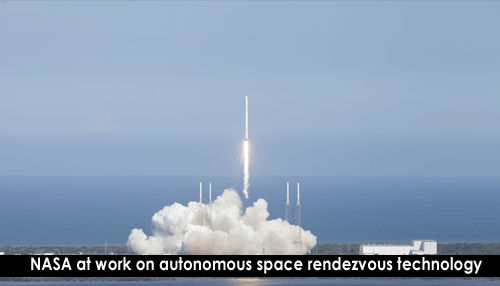International Space Station ( NASA), Launching soon aboard the 10th SpaceX commercial resupply mission, will have a technology module called Raven. Raven will test foundational technologies that will enable autonomous rendezvous in space, and by doing so, NASA will be one step closer to having a relative navigation capability
To envision why autonomous rendezvous is important in space missions, one spacecraft follows another satellite, steadily closing the gap, with each vehicle traveling more than 16,000 miles per hour in the darkness of space. The satellite that is being serviced, the client, is a multi-ton craft that is running out of fuel. The fully robotic servicing satellite, the servicer, named Restore-L, follows in pursuit, carrying life-extending propellant and tools.
The client, not designed to be serviced, does not have markings, making it easier for the servicer to find and secure it. The servicer has to do this on its own, using an advanced machine vision system, perfected using the data collected by Raven aboard the space station. Successful servicing first depends on the servicer’s ability to accurately locate and match speed with the client satellite.
To further complicate this scenario, the servicer is far from Earth, creating a communications delay for command and data exchange to and from space. The delay prevents ground operators from quickly and accurately providing commands to the servicer to prevent a possible collision within the last few feet of the rendezvous.
Therefore, the servicer has to perform relative navigation with its client, and it needs to do so autonomously (by itself, with no human guidance) and in real-time.
“Two spacecraft autonomously rendezvousing is crucial for many future NASA missions and Raven is maturing this never-before-attempted technology,” said Ben Reed, deputy division director for the Satellite Servicing Projects Division (SSPD) at NASA’s Goddard Space Flight Center in Greenbelt, Maryland—the office developing and managing this demonstration mission.
Raven is set to showcase its innovative relative navigation system, compactly housed in carry-on luggage-sized packaging. This breakthrough technology enables a spacecraft to locate and, if required, intercept its intended target. Raven aspires to pioneer a fully matured system for potential integration into future NASA missions.
Five days after launch, Raven will be removed from the unpressurized “trunk” of the SpaceX Dragon spacecraft by the Dextre robotic arm and attached to a payload platform outside the space station. From this perch, Raven will begin providing information for the development of a mature real-time relative navigation system.
The article Originally Appeared in phys.org



